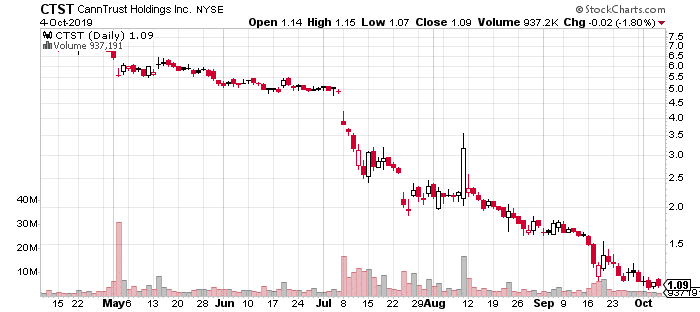Understanding how to evaluate water-soluble technology
Lately, there has been much discussion about water-soluble technology in the cannabis industry. Many companies, eager to convey a transformative milestone to the public, are announcing that they’ve developed their own water-soluble technology. Unfortunately for consumers, many of these claims are premature.
The technology being claimed is, in the vast majority of cases, a nanoemulsion. Put simply, a nanoemulsion is created when an oil is combined with functional ingredients and then blasted with energy, causing the oil particles to split into smaller pieces. When the particles are made small enough, it looks like they dissolve in water (they become “water compatible”).
Nanoemulsions have incredibly useful applications – particularly in the cannabis industry where they solve key issues that plague derivative products. A well-made nanoemulsion will allow uniform dispersion of cannabis oils into water-based products such as beverages, gummies and some topicals. It will also increase the absorption, and reduce the onset time, of THC’s psychotropic effects. The problem, though, lies in whether a given nanoemulsion is actually commercially viable.
Just as you do when you’re thinking of buying a new vehicle, you need to ask questions about how well a nanoemulsion performs. There are a number of things you absolutely have to understand about a nanoemulsion before you can know whether it will actually work in your derivative product:
- Particle size, the type of testing used in measuring size: the ‘by volume’ test is far more optimistic, and less useful, than the ‘dynamic light scattering’ test
- Temperature stability
- pH stability
- Stability in the presence of artificial sweeteners
- The rate at which the active ingredient (e.g. THC) degrades
For example, if a nanoemulsion becomes unstable when used to infuse a citric drink like a lemonade, the oil particles will start to agglomerate, leaving the consumer with a drink that has an oil slick on top and no real reduction in onset time. This type of separation can be seen regularly in nanoemulsions that don’t have broad pH stability.
Another problem regularly encountered by nanoemulsion producers is instability caused by the introduction of artificial sweeteners as part of taste masking. Masking the bitter flavor of nanoemulsions can be done, but it usually requires the use of additives that can destabilize the end product, resulting in a cloudy appearance and eliminating the reduction in onset time. These are just two of many variables that can completely destroy the upside presented by a nanoemulsion. Creating a nanoemulsion solution that can handle all of the destabilizing conditions that are encountered as part of creating and manufacturing a commercially viable product is very difficult.
A leader in this field, Axiomm Technologies, has a nanoemulsion formulation that addresses all of these issues, making it a truly turnkey solution for businesses who want to incorporate this nanotechnology into their products. It has taken a complicated chemistry and engineering problem and reduced it to an easy process that anyone can do using Axiomm’s all-in-one nanoemulsion precursor, µGOO. Having partnered with Qsonica, a market leader in the design, development and manufacture of ultrasonic liquid processors, Axiomm is dedicated to removing the need for businesses to engage in expensive, time-consuming R&D efforts – with no guarantee of success – allowing them to instead focus on other key aspects of their business.
µGOO is a revolutionary precursor technology that enables anyone to produce a consistently best-in-class nanoemulsion. It is compatible with a wide range of inputs and purities and allows users to create a consistently best-in-class nanoemulsion with robust temperature stability, broad pH stability, stability in the presence of artificial sweeteners and minimal active ingredient degradation (less than 2% per month at room temperature, 0.8% per month when refrigerated).

More information on Axiomm and µGOO, including a step-by-step video on how to make a nanoemulsion, can be found at www.axiomm.com.






